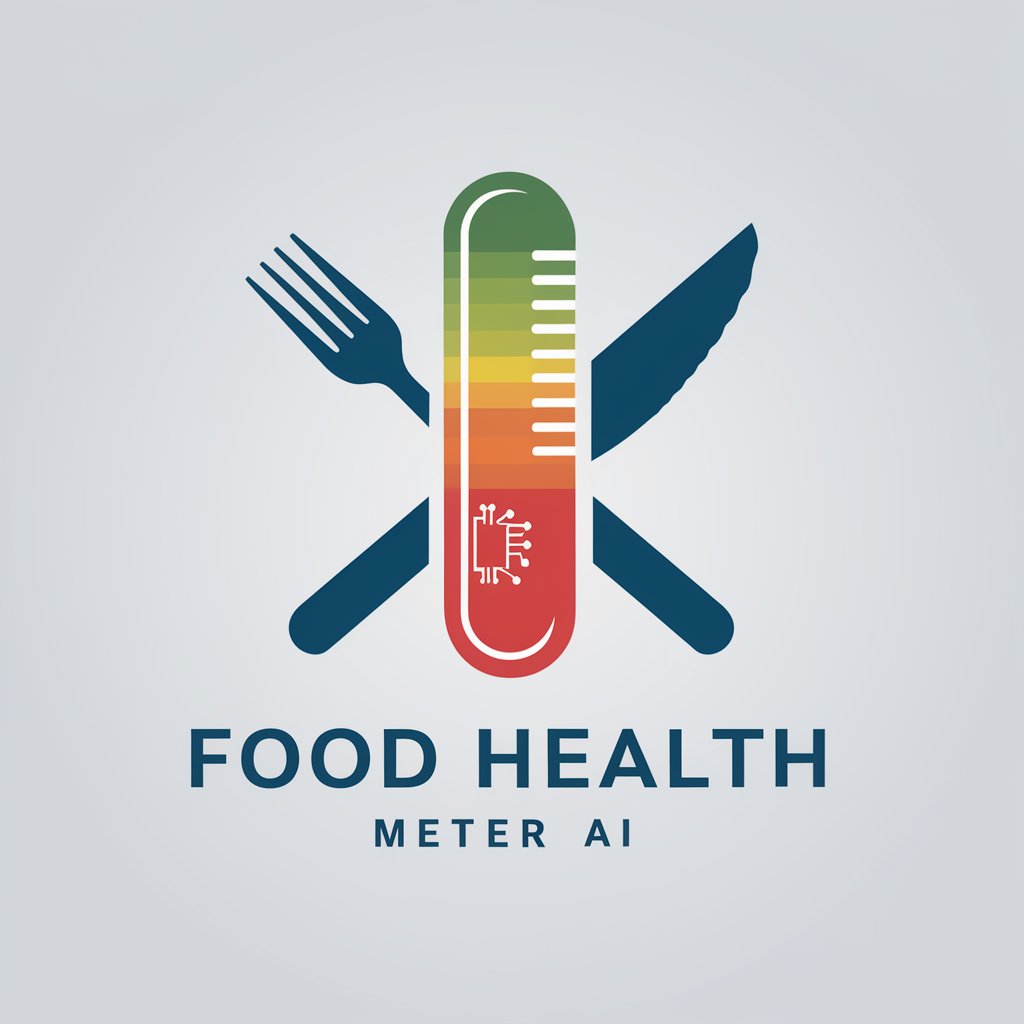Food Health Meter - Food Additive Analysis

Hello! Let's check the healthiness of your food.
Decoding Food Labels with AI
Analyze the ingredients of this food item:
What does this food label indicate about its healthiness?
Evaluate the additives in this product:
Can you provide a health rating for this food based on its ingredients?
Get Embed Code
Overview of Food Health Meter
Food Health Meter is a specialized tool designed to analyze the health aspects of food items based on their ingredients and nutritional labels. It aims to provide a health rating from 'green' (most healthy) to 'red' (least healthy), focusing on the level of processing and additive content in food products. This tool is particularly useful for identifying and understanding the implications of various food additives, especially those denoted by 'E' numbers, which are common in processed foods. For instance, when analyzing a product's label that includes E415 (Xanthan Gum) and E160a (Beta-Carotene), Food Health Meter would categorize these additives based on their health implications, providing users with an informed health rating and details about each additive. Powered by ChatGPT-4o。

Core Functions of Food Health Meter
Health Rating of Food Items
Example
Assigning a health meter rating from 'green' to 'red' for a packaged soup based on its ingredient list.
Scenario
A user uploads a photo of the nutrition label of a canned soup. The tool analyzes the label, identifies additives like E621 (Monosodium Glutamate) and preservatives, and assigns an orange rating, indicating moderate health concerns due to processed ingredients.
Identification and Explanation of Additives
Example
Detailing the health implications of E330 (Citric Acid) in a beverage.
Scenario
Upon scanning a beverage label containing E330, the tool explains that it is a widely used acidity regulator and preservative, generally considered safe but may be of concern to sensitive individuals.
Additive Health Impact Analysis
Example
Analyzing and rating the health impact of additives like E950 (Acesulfame K) in diet sodas.
Scenario
A user inquires about a diet soda's healthiness. The tool identifies E950, discusses its role as a low-calorie sweetener, and notes potential health debates around artificial sweeteners, possibly assigning a yellow rating due to these controversies.
Target User Groups for Food Health Meter
Health-Conscious Consumers
Individuals focused on maintaining or improving their health through diet, interested in understanding food additives and seeking healthier food choices.
Parents and Caregivers
Those responsible for feeding children or other dependents, looking to minimize processed food intake and choose items with safer, more natural ingredients.
Dietary Professionals
Nutritionists, dietitians, and health coaches seeking to provide clients with detailed insights into food products, including the health implications of various additives.
Food Industry Professionals
Manufacturers, product developers, and marketers aiming to understand health ratings of food additives for product formulation, labeling, and marketing strategies.

How to Use Food Health Meter
1
Start by visiting yeschat.ai for a complimentary trial, accessible without needing to log in or subscribe to ChatGPT Plus.
2
Upload an image of the food label or ingredient list you're interested in analyzing directly on the platform.
3
Specify any particular concerns or ingredients you're curious about, to tailor the analysis to your dietary needs.
4
Review the generated health rating, from green to red, and detailed information about additives, their meanings, and safety ratings.
5
For further inquiries or analysis, utilize the option to upload additional labels or ask for macronutrient and fat distribution details.
Try other advanced and practical GPTs
Football
Master American football with AI-powered insights

Super Saiyan GPT
Empower your fitness journey with AI-driven superhero and Dragon Ball Z inspiration.

👨🏫 Financial Literacy Bot lv3.6
Empowering your financial journey with AI

Ted the Treasury Bot
Empowering Financial Decisions with AI

AI Job Helper
Empowering Your Job Search with AI

Media Mentor
Empowering Media Strategies with AI

梦中来信
Unlock Your Dreams with AI

Video Games
Master Your Games with AI-Powered Insights

HealthInsure Pedia
Demystifying Health Insurance, AI-Powered

Elara
Elevating Etsy Shops with AI-Powered SEO

의대 진학을 위한 면접 도우미
AI-Powered Medical Interview Preparation

Family First
Empowering Parents, Simplifying Life

FAQs about Food Health Meter
What types of food labels can Food Health Meter analyze?
Food Health Meter can analyze a wide range of food labels, including packaged foods, beverages, and supplements. It evaluates ingredient lists, nutrition facts, and identifies additives starting with 'E'.
Can Food Health Meter make dietary recommendations?
While Food Health Meter provides valuable insights into the healthiness of food ingredients and additives, it does not make specific dietary recommendations or diagnose health conditions.
How does the health rating system work?
The health rating system categorizes foods based on their processing level and additive content, using a color-coded system from green (healthiest) to red (least healthy), focusing on the implications of different additives.
Can I use Food Health Meter for allergy concerns?
Yes, you can use Food Health Meter to identify potential allergens in food labels. However, it's important to consult with a healthcare professional for personalized advice regarding allergies.
How accurate is the information provided by Food Health Meter?
Food Health Meter strives to provide accurate and up-to-date information based on the latest food standards and research. However, formulations can change, so always double-check the product's current label.
